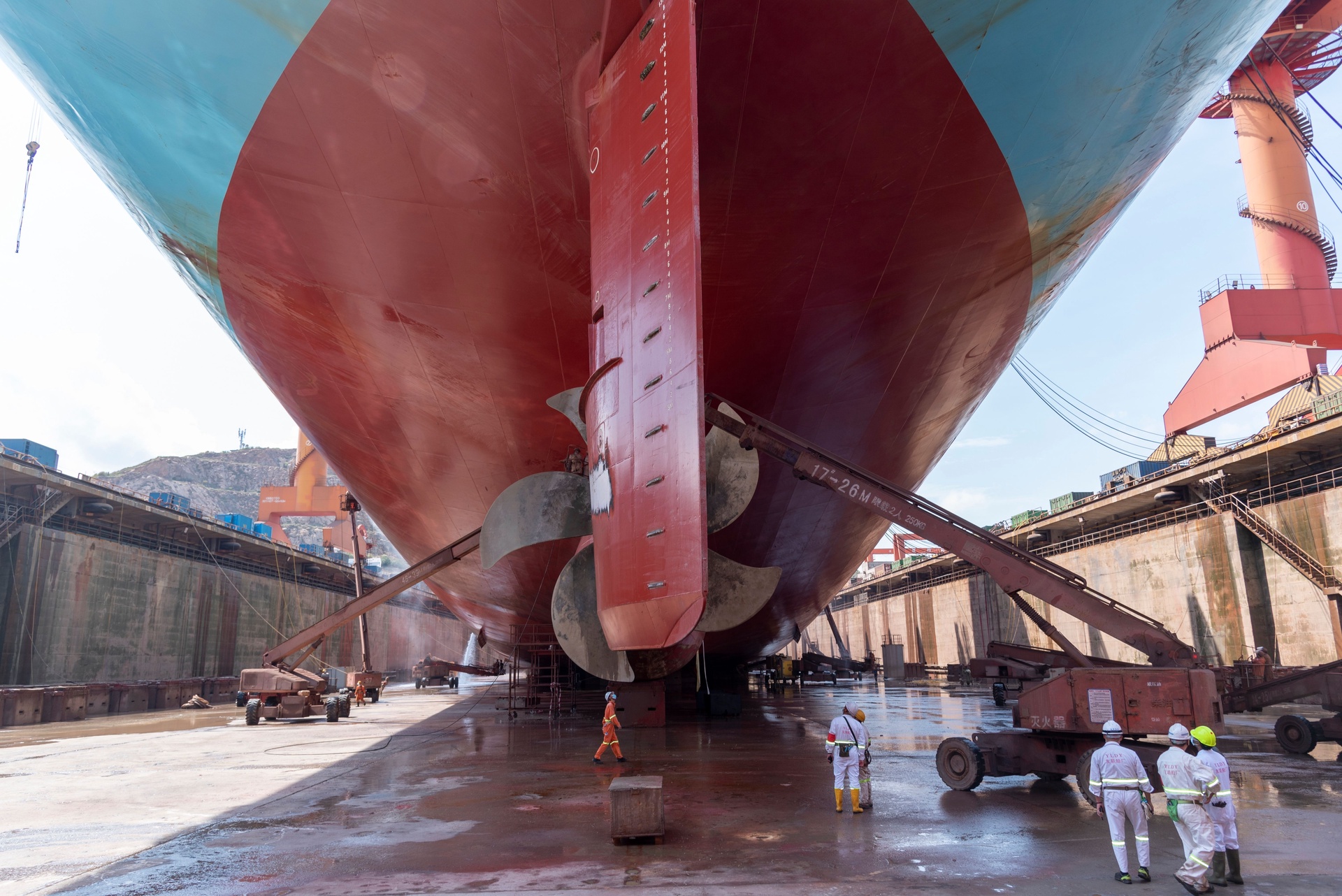Having witnessed the Belt & Road Initiative (BRI) grow in global influence for five years since its launch back in 2013, there is now a flurry of responses from rival countries.
For instance, at the end of July, US Secretary of State Mike Pompeo outlined a so-called "Indo-Pacific Economic Vision". This comes as the European Union (EU) is working on an Asian connectivity strategy, details of which are likely to be unveiled at the twelfth Asia Europe Meeting (ASEM) Summit in Brussels on 18 and 19 October.
Meanwhile China's regional rival Japan has taken a different tack, and instead of openly competing with the BRI has elected to co-operate with China on infrastructure projects.
For example, on 25 September the first session of the China-Japan Third-Party Market Cooperation Working Mechanism was held in Beijing. Attendees included: vice minister of Commerce, Qian Keming, deputy secretary general of National Development and Reform Commission, Su Wei, and Japanese special advisor to the Prime Minister, Izumi Hiroto.
Mention of the term 'Belt & Road' was avoided. Themed on "the Reality and Prospects of China-Japan Third-party Market Cooperation", the two sides exchanged views on the direction and policies of third-party market cooperation and the promotion of specific cooperation projects. The two sides confirmed that they will work together to hold the first China-Japan Third-Party Market Cooperation Forum in China this year.
This recent upturn in activity from Japan, the EU and the US reflects the unexpected and advanced level of progress of Belt & Road projects since it was launched as President Xi Jinping's personal signature project early in his first term.
Over the past twelve months there has been a concerted attack on the BRI from the US and EU, focused on the theme of a so-called debt mountain created by large infrastructure projects built by Chinese companies and financed by Chinese banks.
The critics have been quick to point to some problem areas. One notable example often cited of Chinese skullduggery is Malaysia's desire to renegotiate the terms of what it views as over-expensive projects; another is Chinese companies taking control of Hambantota Port in Sri Lanka on a 99-year lease, having negotiated from a position of strength because Sri Lanka was struggling to pay off project debt owed to Chinese banks.
But in spite of these controversies, for many countries, awarding contracts to Chinese contractors that have the wherewithal to bring their own debt finance with them remains an attractive proposition.
Furthermore, it is often said that imitation is the sincerest form of flattery, so in many ways recent EU and United States initiatives that look similar is a sign of the success of the BRI, as is Japan's co-operation with China on infrastructure projects.
Japan has traditionally been viewed as the driving force behind the Asian Development Bank (ADB), and over the past two years there has already been joint lending on projects featuring the ADB and the China-led multilateral development institution known as the Asian Infrastructure Investment Bank (AIIB).
The recent Third-Party Market Cooperation Working Mechanism meeting took place after Japanese Prime Minister Shinzo Abe and Chinese Premier Li Keqiang instigated the concept in Tokyo in May. Economic cooperation abroad has been positioned as a driver in the push to improve bilateral ties.
Abe will visit China in October, accompanied by a large trade delegation, and during his stay some major agreements on infrastructure projects are expected to be signed.
One of the first projects where there could be co-operation concerns the rail network in Thailand - rail projects traditionally being an area where Japan and China compete. New rail links are a critical element of Thailand's Eastern Economic Corridor initiative. Already in May of this year in Bangkok, the Eastern Economic Corridor Office (EECO), in cooperation with the Embassy of China and the Embassy of Japan, organised a seminar on "China – Japan Cooperation on the Eastern Economic Corridor of Thailand". This followed the signing on 9 May of the MoU on Japan-China co-operation.
On 24 September the committee for the Thai-Chinese high-speed rail cooperation project held a meeting to follow up on progress of the project, which will link Bangkok with Nong Khai in northeastern Thailand, connecting farther through Laos and then on to the Chinese border.
The United States is hoping to take advantage of any tensions between China and countries that have signed up to the BRI.
Following the announcement by Secretary of State Mike Pompeo of the Indo-Pacific Economic Vision, the Overseas Private Investment Corp (OPIC) is being revamped in support of this vision.
The reorganization is taking place under the Better Utilization of Investments Leading to Development (BUILD) Act. On 26 September, OPIC chief executive officer, Ray Wasburne, welcomed its passage through the House of Representatives. The BUILD Act was incorporated into the FAA Reauthorization Act of 2018, which passed the House by a vote of 398-23. The legislation now heads to the Senate for consideration.
"This landmark legislation is essential to meeting the massive development needs around the globe and advancing American foreign policy," he says. "Today, the House of Representatives put the Administration's plan for a modern U.S. Development Finance Institution - with 21st century tools - a big step closer to reality."
Wasburne could not resist the opportunity to take aim at China. "The Administration looks forward to the BUILD Act becoming law so that we will be better equipped to drive economic growth in emerging markets and provide an alternative to state-directed initiatives that can leave developing countries worse off," he insists.
OPIC is a US government-backed international finance development agency, and has already signed agreements with the overseas finance development institutions in Japan and Australia. It is now talking to India - which has been a fierce critic of growing Chinese influence owing to Belt & Road.
The thinking behind the initiative is that OPIC will be able to streamline investments in areas such as energy, transport and technology, working alongside the Japanese, Australian and Indian institutions.
OPIC will be renamed the US International Development Finance Corporation (USIDFC), and will be able to provide equity as well as debt, while also bringing in private sector investors on projects.
Meanwhile, Europe is upping its game. In Brussels, the EU is busy working on a new Asia connectivity strategy, led by Federica Mogherini, High Representative of the Union for Foreign Affairs and Security Policy.
At a launch event in Brussels on 19 September, Mogherini said that the initiative would focus on sustainable projects which respect environmental standards and do not overextend national budgets.
Political analysts sense that the EU has become very concerned about the presence of Chinese-led projects in southern Europe, not only in countries bordering the EU like Serbia and Montenegro, but also inside the EU itself, such as Piraeus Port in Greece.
Analysts also accuse Europe of not having a coherent strategy in the face of Chinese economic expansion, but that is now changing. For example, the European Battery Alliance is currently working towards setting up factories in the EU to manufacture battery cells for e-autos. China is well ahead in this industry segment, and CATL has plans to build a factory in Germany.
Details of the EU's Asia connectivity strategy are expected to be revealed at the Asia Europe Meeting (ASEM) Summit in Brussels on 18 and 19 October.
ASEM is an intergovernmental process established in 1996 to foster dialogue and cooperation between Asia and Europe. Presently, it comprises 53 partners: 30 European and 21 Asian countries, the EU and the ASEAN Secretariat. ASEM addresses political, economic, financial, social, cultural, and educational issues of common interest. China is a member of ASEM.
The ASEM Summit is a biennial meeting attended by the heads of state and government, the President of the European Council, the President of the European Commission, and the Secretary-General of the Association of Southeast Asian Nations (ASEAN).
However, the current five-year European Parliament and Commission is coming to an end, as there are parliamentary elections next May, followed by the appointment of a new Commission. Though 2019 will therefore be a transition year, developing an economic strategy to counter Chinese influence will be high on the agenda as new Commissioners and MEPs take up their positions.
Amidst all this activity, the BRI is itself evolving. In a significant development, new Pakistan President Imran Khan visited Saudi Arabia on 19 September, and shortly afterwards it was announced that the Saudis are joining the China-Pakistan Economic Corridor (CPEC), which is one of the most active elements of the BRI.
Pakistan press reports implied that Pakistan invited Saudi Arabia to join the CPEC, having already sounded out China. Economic ties between China and Saudi Arabia are in any case getting closer.
Reports in the Pakistan media suggest Saudi Arabia is coming in with an initial US$10 billion, and wants to help develop Gwadar Port into a major petroleum hub.









